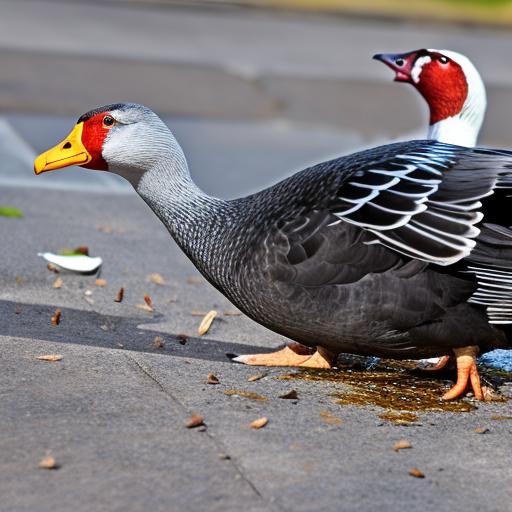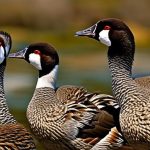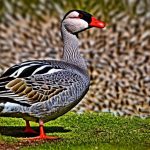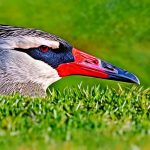Geese are known for their strong family bonds and their instinct to return to the same nesting and resting areas year after year. They are also highly adaptable birds, able to thrive in a variety of environments, including urban and suburban areas. Geese are herbivores, feeding on grasses, grains, and aquatic plants, and they are often drawn to well-maintained lawns and bodies of water. They are also highly territorial during their nesting season, which typically lasts from March to June, and will aggressively defend their nesting sites from perceived threats.
Geese are also highly social animals, often traveling in large flocks and communicating with each other through a series of honks and calls. They are also known for their strong homing instincts, which can lead them to return to the same areas year after year. Understanding these behaviors is crucial when developing strategies to manage geese populations in urban and suburban areas.
Geese are also known for their adaptability and intelligence, making them a challenging species to manage. They are quick to learn and can become habituated to certain deterrents if they are not consistently enforced. Additionally, geese have a strong sense of community and will often follow the lead of other members of their flock. This means that if one goose finds a suitable resting or nesting area, others are likely to follow. Understanding these behaviors is crucial when developing strategies to manage geese populations in urban and suburban areas.
Key Takeaways
- Geese are social birds that prefer open areas near water for feeding and resting
- Physical barriers such as fences, hedges, and netting can effectively deter geese from entering certain areas
- Repellents like motion-activated sprinklers, reflective tape, and taste aversions can discourage geese from staying in specific locations
- Providing alternative resting areas like floating islands or artificial turf can attract geese away from unwanted areas
- Encouraging natural predators like dogs, hawks, and coyotes can help control geese populations in a natural way
- Regularly cleaning up food sources, managing water features, and removing nesting materials can help reduce the attractiveness of an area to geese
- Educating the community about the negative impacts of feeding geese and the importance of implementing deterrent strategies can help garner support for geese management efforts
Implementing physical barriers
One effective way to manage geese populations in urban and suburban areas is by implementing physical barriers to prevent them from accessing certain areas. This can include installing fences or hedges around bodies of water or well-maintained lawns where geese are likely to congregate. These barriers can help to deter geese from nesting or resting in these areas, as well as prevent them from accessing food sources.
Another effective physical barrier is the use of floating barriers on bodies of water. These barriers can be placed around the perimeter of the water to prevent geese from accessing the shore, where they often congregate and leave droppings. These barriers can be made from materials such as plastic or wire mesh and can be easily installed and removed as needed.
In addition to these physical barriers, landscaping changes can also be effective in deterring geese from certain areas. For example, planting tall grasses or shrubs around bodies of water can make it more difficult for geese to access the shore, reducing the likelihood of them congregating in these areas. These physical barriers can be an effective way to manage geese populations in urban and suburban areas, but they must be consistently maintained and enforced to be effective.
Using repellents
Another effective strategy for managing geese populations in urban and suburban areas is the use of repellents. There are a variety of repellents available that can be used to deter geese from nesting, resting, or feeding in certain areas. These repellents can come in the form of sprays, gels, or granules and are often made from natural ingredients that are safe for the environment and other wildlife.
One common type of repellent is a chemical spray that can be applied to grassy areas where geese are likely to congregate. These sprays emit a scent that is unpleasant to geese, causing them to avoid the treated area. Another type of repellent is a gel that can be applied to surfaces such as docks or lawns where geese are likely to leave droppings. This gel creates a sticky surface that is uncomfortable for geese to walk on, deterring them from accessing these areas.
In addition to chemical repellents, there are also natural repellents that can be used to manage geese populations. For example, planting certain types of vegetation that are unappealing to geese, such as tall grasses or shrubs with thorns, can help to deter them from nesting or resting in certain areas. These natural repellents can be an effective way to manage geese populations in urban and suburban areas without causing harm to the birds or the environment.
Creating alternative resting areas
One way to manage geese populations in urban and suburban areas is by creating alternative resting areas for the birds. By providing suitable resting areas away from high-traffic or well-maintained areas, it is possible to encourage geese to relocate and reduce their impact on public spaces.
One effective way to create alternative resting areas for geese is by designating specific areas within parks or open spaces where the birds are allowed to rest undisturbed. These areas can be equipped with features such as tall grasses, shrubs, or artificial islands that provide suitable habitat for geese while keeping them away from high-traffic areas.
Another effective strategy is the installation of floating platforms on bodies of water where geese are likely to congregate. These platforms provide a safe and comfortable resting area for the birds while keeping them away from shorelines where they may cause damage or leave droppings. By providing alternative resting areas for geese, it is possible to reduce their impact on public spaces while ensuring their welfare is taken into consideration.
Encouraging natural predators
Another effective strategy for managing geese populations in urban and suburban areas is by encouraging the presence of natural predators that can help to keep their numbers in check. Predators such as foxes, coyotes, and birds of prey are known to prey on geese and can help to reduce their populations in certain areas.
One way to encourage natural predators is by creating suitable habitat for them within urban and suburban areas. This can include leaving patches of natural vegetation or creating wildlife corridors that provide cover and food sources for predators. By creating suitable habitat for natural predators, it is possible to encourage their presence and help keep geese populations in check.
Another effective strategy is the use of predator decoys or visual deterrents that mimic the presence of natural predators. These decoys can include models of predatory birds or animals that are placed in areas where geese are likely to congregate. The presence of these decoys can help to deter geese from nesting or resting in these areas by creating the impression that they are at risk of predation.
By encouraging the presence of natural predators within urban and suburban areas, it is possible to help keep geese populations in check while maintaining a balanced ecosystem. However, it is important to ensure that these strategies do not pose a threat to other wildlife or domestic animals within the area.
Establishing a regular cleaning schedule
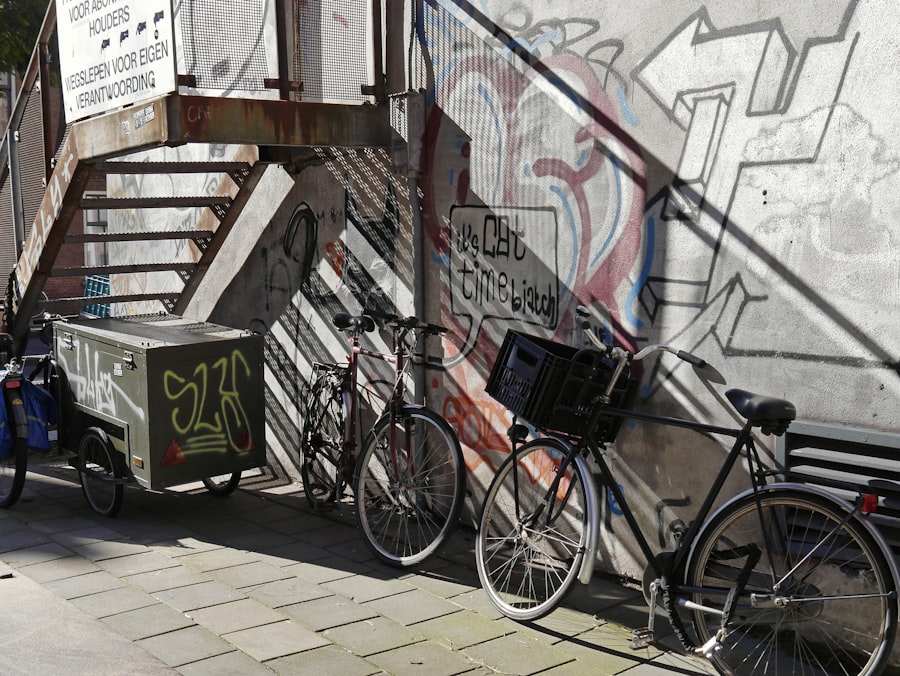
One important aspect of managing geese populations in urban and suburban areas is establishing a regular cleaning schedule to remove droppings and other waste left behind by the birds. Geese are known for their prolific droppings, which can accumulate quickly in public spaces and create unsanitary conditions for humans and other wildlife.
By establishing a regular cleaning schedule, it is possible to remove droppings from public spaces before they become a nuisance or health hazard. This can include using equipment such as pressure washers or vacuums to remove droppings from sidewalks, lawns, and other surfaces where geese are likely to congregate.
In addition to removing droppings, it is also important to establish a regular maintenance schedule for bodies of water where geese are likely to congregate. This can include removing algae or other vegetation that provides food sources for geese, as well as installing aerators or other equipment that can help to improve water quality and discourage the birds from congregating in these areas.
By establishing a regular cleaning schedule, it is possible to reduce the impact of geese populations on public spaces while maintaining a clean and sanitary environment for humans and other wildlife. However, it is important to ensure that these cleaning activities do not pose a threat to other wildlife or the environment.
Educating the community
Finally, one important aspect of managing geese populations in urban and suburban areas is educating the community about the behaviors of these birds and the strategies that can be used to manage their impact on public spaces. By raising awareness about the habits and behaviors of geese, it is possible to encourage community members to take proactive measures to reduce their impact on public spaces.
One effective way to educate the community about geese behavior is by providing information through local media outlets, community events, or educational materials such as brochures or signs posted in public spaces. This information can include details about the nesting and resting habits of geese, as well as strategies that can be used to deter them from congregating in certain areas.
Another effective strategy is the implementation of community-based programs that encourage residents to take proactive measures to manage geese populations in their neighborhoods. This can include initiatives such as community clean-up events, habitat restoration projects, or neighborhood watch programs that encourage residents to report sightings of nesting or resting geese.
By educating the community about the behaviors of geese and the strategies that can be used to manage their impact on public spaces, it is possible to foster a sense of shared responsibility for maintaining a balanced ecosystem within urban and suburban areas. This can help to reduce conflicts between humans and wildlife while ensuring the welfare of both is taken into consideration.
If you’re tired of geese leaving a mess on your sidewalk, you might be interested in learning about converting a shed into a chicken coop. This article from PoultryWizard provides valuable insights and tips on how to repurpose a shed to create a comfortable and functional space for your chickens. By creating a designated area for your feathered friends, you can help minimize their presence on the sidewalk and keep your outdoor spaces cleaner. Check out the article here for more information.
FAQs
What are some effective methods to keep geese from pooping on sidewalks?
Some effective methods to keep geese from pooping on sidewalks include installing physical barriers such as fences or hedges, using repellents or deterrents, and modifying the environment to make it less attractive to geese.
What are some natural repellents that can be used to keep geese away from sidewalks?
Natural repellents that can be used to keep geese away from sidewalks include citrus-based sprays, predator decoys, and reflective objects such as shiny tape or balloons.
Are there any non-lethal methods to deter geese from pooping on sidewalks?
Yes, there are non-lethal methods to deter geese from pooping on sidewalks, such as using noise-making devices, applying taste aversions, and modifying the landscape to make it less appealing to geese.
Is it legal to harm or kill geese to prevent them from pooping on sidewalks?
In many places, it is illegal to harm or kill geese as they are protected under wildlife conservation laws. It is important to use non-lethal methods to deter geese from pooping on sidewalks.
What are some long-term solutions for keeping geese away from sidewalks?
Some long-term solutions for keeping geese away from sidewalks include habitat modification, such as reducing access to water or food sources, and implementing landscape designs that discourage geese from congregating in the area.
Meet Walter, the feathered-friend fanatic of Florida! Nestled in the sunshine state, Walter struts through life with his feathered companions, clucking his way to happiness. With a coop that’s fancier than a five-star hotel, he’s the Don Juan of the chicken world. When he’s not teaching his hens to do the cha-cha, you’ll find him in a heated debate with his prized rooster, Sir Clucks-a-Lot. Walter’s poultry passion is no yolk; he’s the sunny-side-up guy you never knew you needed in your flock of friends!

